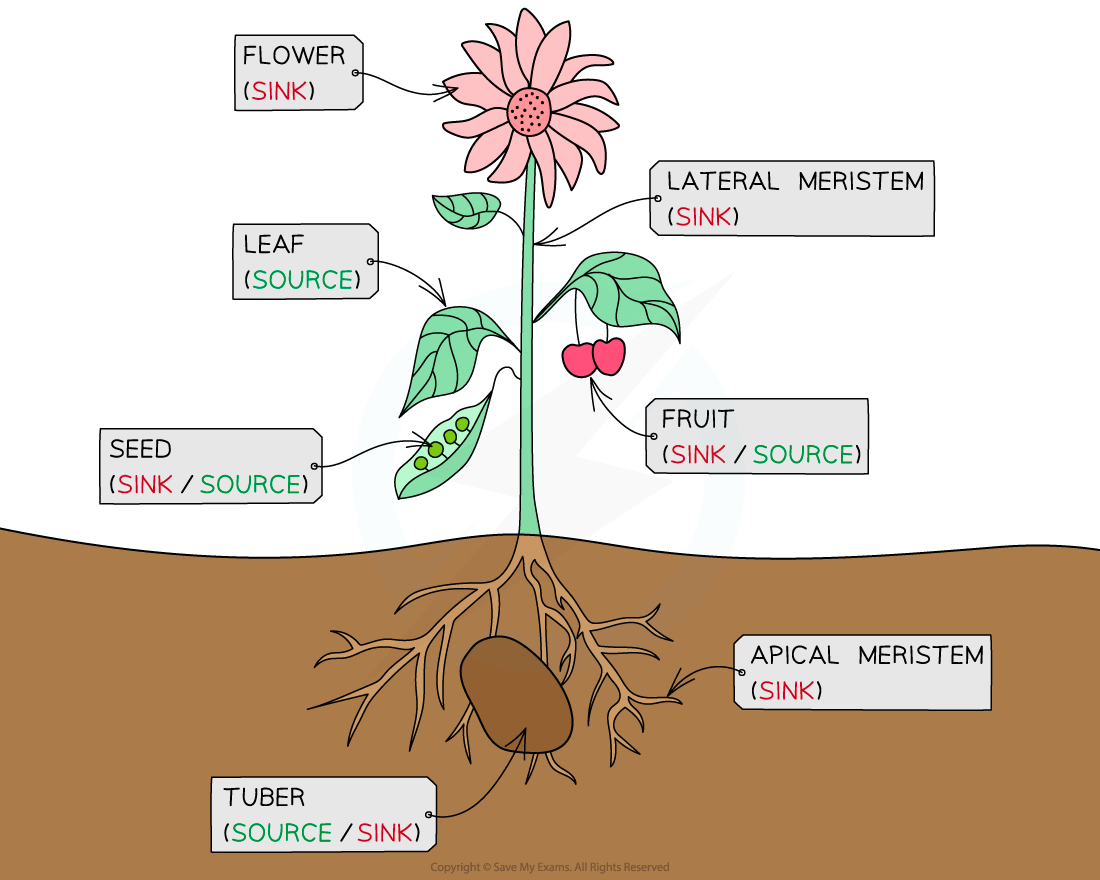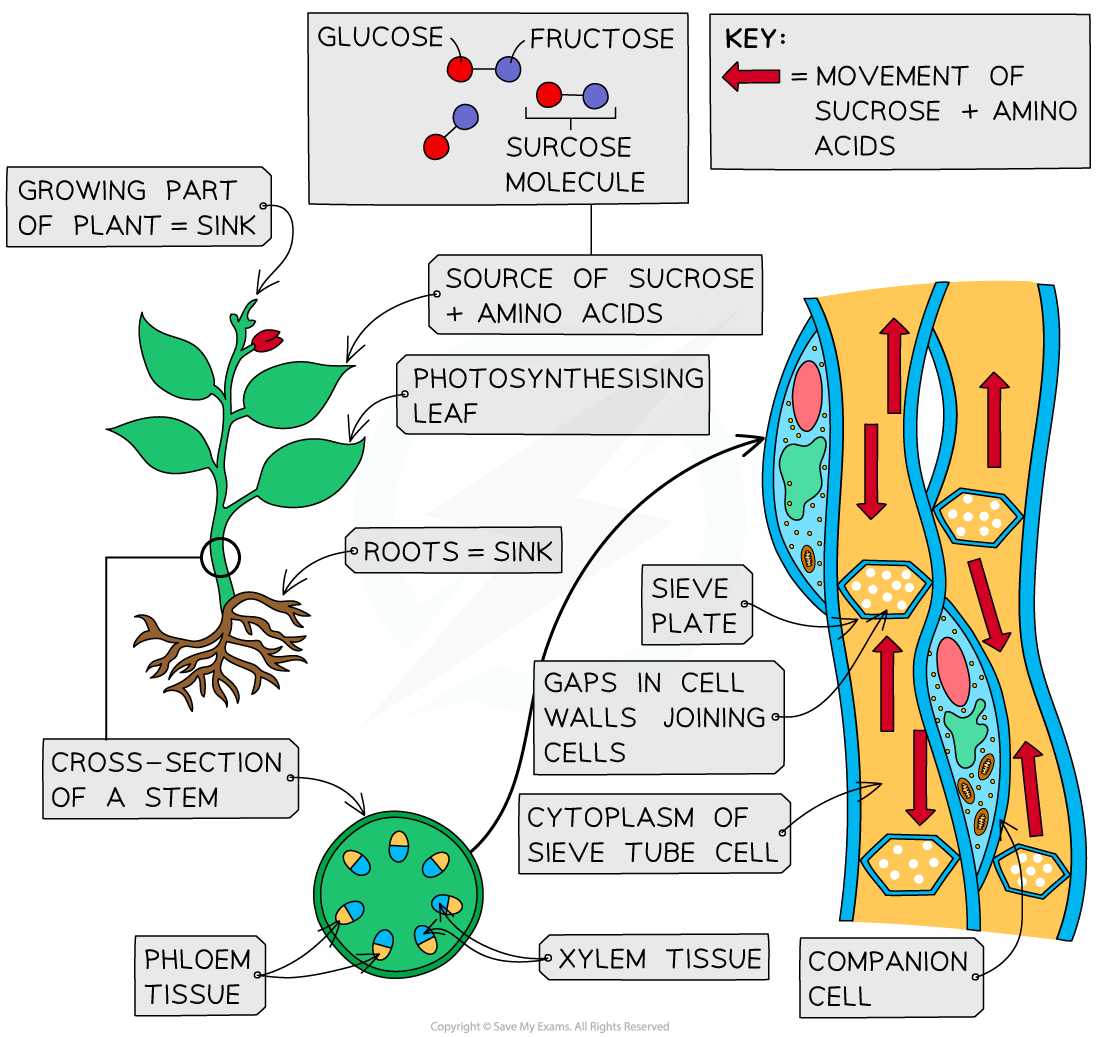Movement in the Phloem (Cambridge (CIE) AS Biology): Revision Note
Exam code: 9700
Movement in the phloem
Translocation is connected with the transport of assimilates in the phloem tissue
Thus translocation within phloem tissue can be defined as the transport of assimilates from source to sink and requires the input of metabolic energy (ATP)
The liquid that is being transported (found within phloem sieve tubes) is called phloem sap
This phloem sap consists not only of sugars (mainly sucrose) but also of water and other dissolved substances such as amino acids, hormones and minerals
The source of the assimilates could be:
Green leaves and green stem (photosynthesis produces glucose which is transported as sucrose, as sucrose has less of an osmotic effect than glucose)
Storage organs e.g. tubers and tap roots (unloading their stored substances at the beginning of a growth period)
Food stores in seeds (which are germinating)
The sinks (where the assimilates are required) could be:
Meristems (apical or lateral) that are actively dividing
Roots that are growing and / or actively absorbing mineral ions
Any part of the plant where the assimilates are being stored (e.g. developing seeds, fruits or storage organs)

The loading and unloading of the sucrose from the source to the phloem, and from the phloem to the sink is an active process
It can be slowed down or even stopped at high temperatures or by respiratory inhibitors
Translocation of assimilates is not fully understood yet by scientists. The understanding they do have has come from studies such as:
On plants whose sap ‘clots’, so that it is still possible to collect and study the sap (e.g. castor oil plants)
Using aphids to collect the sap – after the aphid inserts its stylet (tubular mouthpart) scientists remove the aphids head and collect the sap that continues to flow
Using radioactively labelled metabolites (e.g. Carbon-14 labelled sugars) which can be traced during translocation
Advances in microscopes enabling the adaptations of companion cells to be seen
Observations about the importance of mitochondria to the process of translocation

Examiner Tips and Tricks
Assimilates can move upwards or downwards in the phloem sieve tubes as they move from source to sink.

Unlock more, it's free!
Did this page help you?